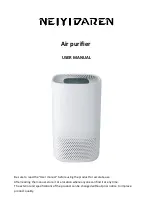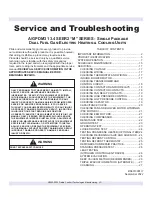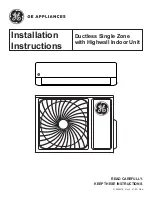
17
3-6. Insulation of Refrigerant Tubing
To prevent heat loss and wet floors due to dripping of con-
densation,
both tubes must be well insulated with a
proper insulation material.
The thickness of the insulation should be a minimum 5/16"
(8 mm). (Fig. 16)
I
For wall-mounted units
After connecting the refrigerant tubing to the outdoor unit
and performing a leak test on the connecting part, insulate it
with the tubing insulation. (Fig 17a)
I
For ceiling-mounted cassette units
Wind the insulation tape around the flare nuts at the tube
connections. Secondly cover up the tubing connections
with the flare insulation (1/8" (T3, supplied)). Then wind the
other flare insulation (3/16" (T5, supplied)). Finally, fasten
the insulation at both ends with the supplied vinyl ties.
(Fig. 17b)
Insulation material
The material used for insulation must have good insulation
characteristics, be easy to use, be age resistant, and must
not easily absorb moisture.
IMPORTANT
Indoor unit
Outdoor unit
Spanner
Torque wrench
Fig. 15
Insulation
Min.
5/16"
(8 mm)
Thickness:
min. 5/16"
(8 mm)
Fig. 16
Insulation
Fig. 17a
CAUTION
Be sure to match refrigerant
tubing and electric wiring
between indoor and outdoor
units.
Fig. 17b
Fig. 17c
Never grasp the drain or refrigerant connecting out-
lets when moving the unit.
Insulation tape (supplied)
Flare insulation (3/16"(T5, supplied) )
Flare insulation (1/8"(T3, supplied) )
Tube insulation
(not supplied)
Vinyl tie (supplied)
Flare nut
The procedure used for installing
the insulation for both wide and
narrow tubes are the same.
Flare
insulation
Vinyl tie (supplied)
Insulation tape
Refrigerant tubing
and insulation
(not supplied)
Drain pipe and insulation
(not supplied)
Drain hose insulation
and vinyl tie
(supplied)
Drain hose
and hose band
(supplied)
09-210 CM3172A_OU 12/11/09 5:04 PM Page 17
















































